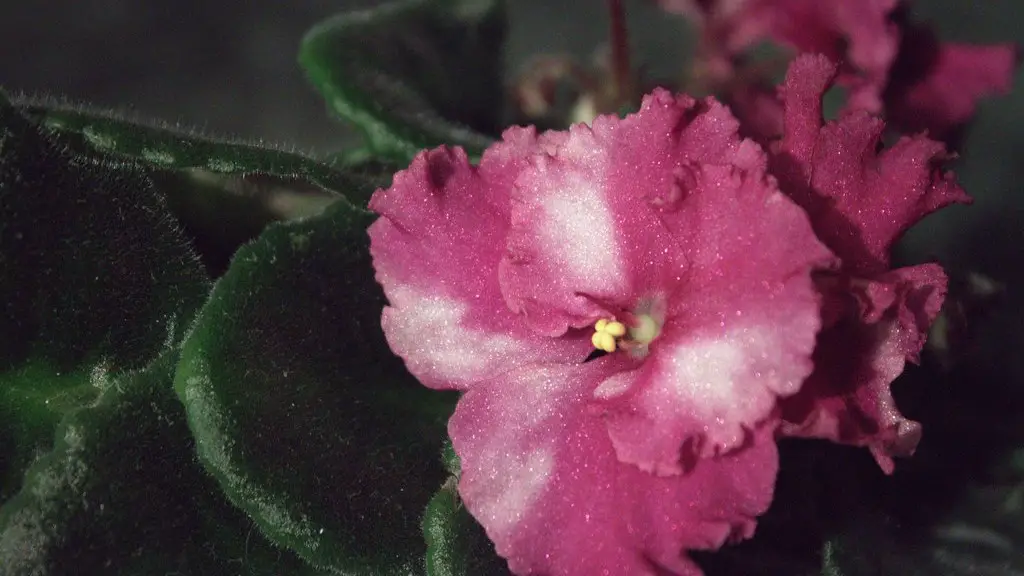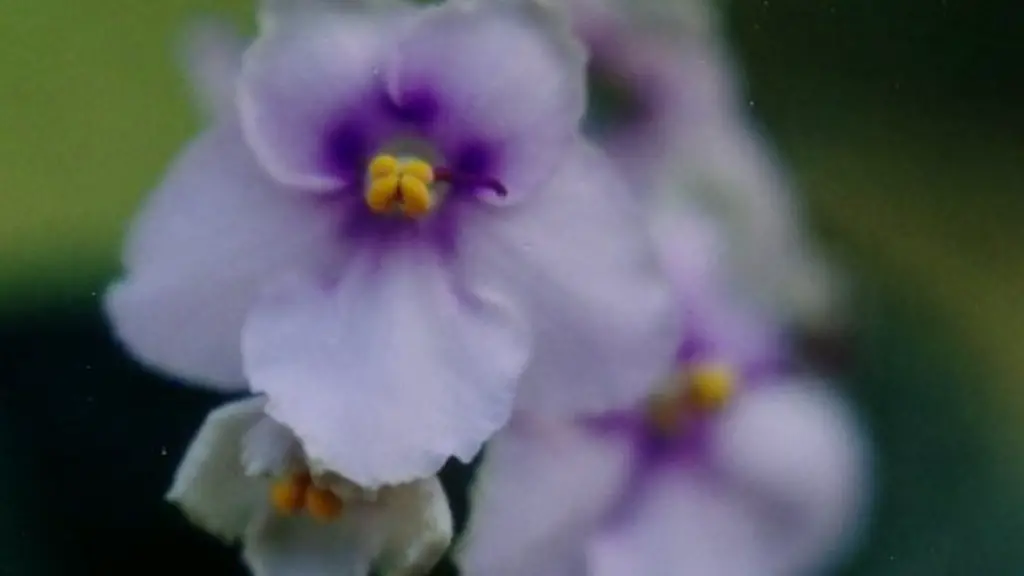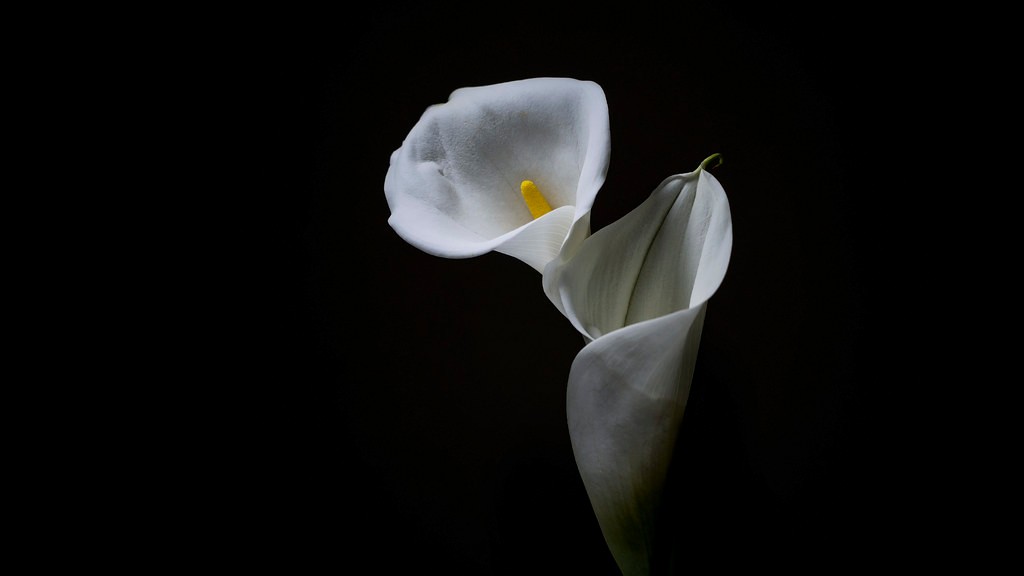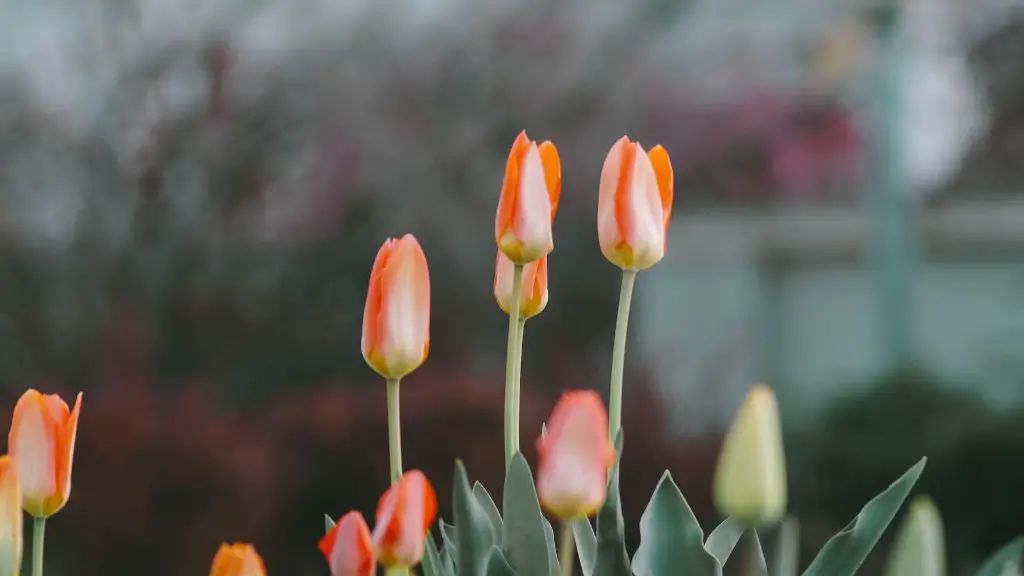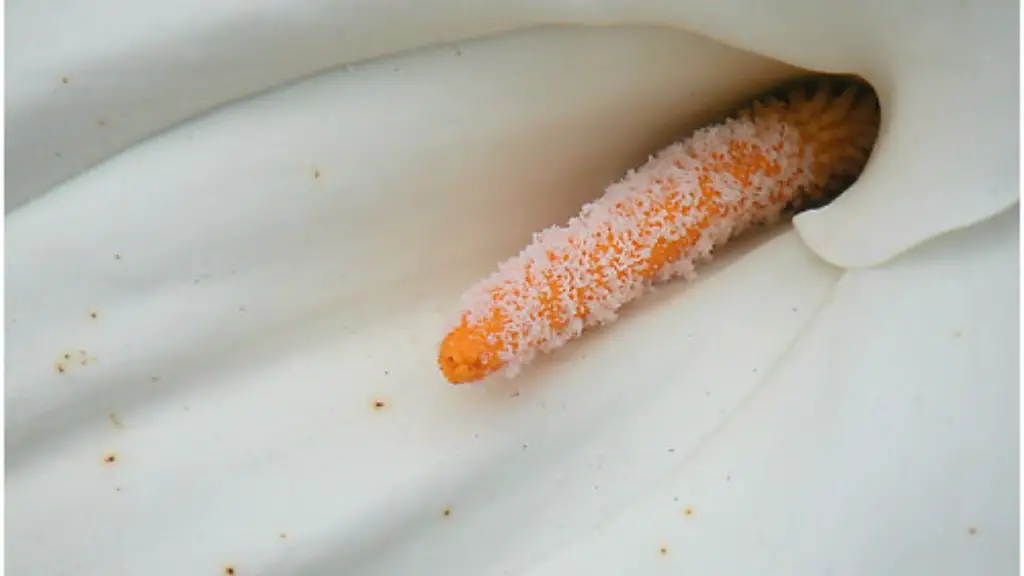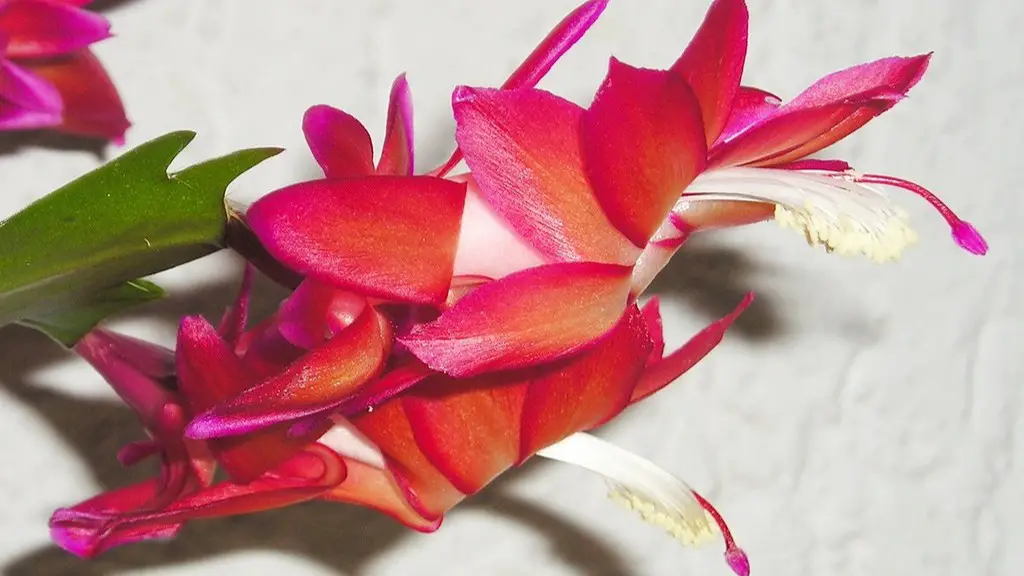African violets (Saintpaulia ionantha) are lovely little flowers that are native to Tanzania in Africa. They are popular houseplants and are known for their delicate beauty. When it comes to watering African violets, there are a few things to keep in mind. First, African violets prefer to be kept moist but not soggy. Over-watering can lead to problems such as leaf-spotting and root rot. Second, it is best to water African violets from the bottom rather than from the top. This can be done by placing the pot in a sink of water and letting the plant soak up the water from the bottom. Third, be sure to use lukewarm water when watering African violets as cold water can shock the plant and cause the leaves to drop.
To water African violets, use tepid water and water from the bottom so the leaves do not get wet.
How much water do African violets need?
If you water your African violet too much, the roots can suffocate and the plant can die. African violets only need water when the soil is almost dry. Usually you’ll need to water about once a week, but this depends on conditions like the temperature, the season, and the size of the African violet’s container.
African violets are best watered from the bottom up. Place the plant in a shallow tray of water for 30 minutes, allowing the soil to soak up the water through the drainage holes at the bottom of the pot. This will help to prevent the leaves from getting wet and reduces the chances of them getting diseases.
How do I know if my African violet needs water
If the soil feels dry to the touch, it is time to water your African violet. Allow the plant to dry out between waterings for best results. Overwatering can kill a plant. The fine roots of an African violet need air, which cannot penetrate a soggy wet soil mass.
When watering your African violet, be sure to water the soil, not the leaves. Water on the leaves can cause them to rot.
Can I water African violets with tap water?
If you are unsure about the quality of your tap water, it is best to err on the side of caution and use filtered or distilled water for your African violets. Chlorine levels can fluctuate depending on the season and in some areas, tap water may have high amounts of chlorine, chloramines, or dissolved solids. All of these things may adversely affect your African violets, so it is best to use filtered or distilled water if possible.
When cleaning your African Violet leaves, it is best to use room temperature or tepid water. Fill a spray bottle with water and spray the leaves. Using your fingers, rub the top and bottom of the leaves. You can also use the spray bottle method to clean the leaves with liquid soap.
Should I mist my African violets?
It is very important that you do not mist the foliage of your African violet as this can cause permanent leaf spotting. Instead, use room temperature water to water the plant from the bottom. Be sure to not saturate the crown of the plant as this can lead to crown rot.
We recommend letting your water sit for 24-48 hours before giving it to your African violet. This allows the water to reach room temperature, which is optimal for your plant. If you can’t let the water sit that long, then at least let it stand for an hour.
Can you water African violets with ice cubes
Only use room temperature water to avoid damaging your plants. While ice cubes slowly melt and add moisture to the soil, the cold water makes your violets more susceptible to discoloration.
Watering your plants is an important part of keeping them healthy and encouraging them to bloom. Water them from the bottom, using room temperature water, and allow the soil around the roots to dry out slightly before watering again. This will encourage healthy root growth and discourage pests and diseases.
Where is the best place to put an African violet?
If you want your plants to have the best color and blooms, grow them in bright, indirect light. A plant stand three feet away from a west- or south-facing window is an ideal location. Plants will still grow when situated right beside north- or east-facing windows, but leaves will be thin and spindly, and plants less likely to bloom.
The answer is yes you can get African violet leaves with not a problem at all. However, you must use a pot that is big enough for the size of the leaves and have proper drainage. I would recommend using a pot that is at least 6 inches in diameter.
What do Overwatered African violets look like
If your African Violet plant has been over-watered, the soil will retain too much water. This retention of water will cause the leaves and /or leaf stems to turn soft, limp or mushy.
African violets need indirect sunlight and a north- or east-facing window for best results. Keep plants away from cold glass and rotate the pot once a week so all leaves receive light. Extend daylight by placing African violets under a grow light during winter months.
How often do you feed African violets?
Your African Violet needs fertilizer to stay healthy throughout the year. During the spring and summer, you should fertilize your African Violets once every 14 days. In the fall and winter, you shouldn’t fertilize the plant at all to prevent over-fertilizing.
Coffee grounds are slightly acidic and contain nitrogen, which helps plants grow healthy foliage.Occasionally sprinkling used coffee grounds on top of your African violet potting soil can be good for the plant.
Conclusion
African violets need to be watered from the bottom, so that their leaves do not get wet. Fill a saucer or tray with water and place the pot on top of it, making sure that the water does not come up higher than the pot’s drainage holes. Allow the plant to soak up the water for about 15 minutes, then remove it and empty the saucer.
The proper way to water African violets is to use lukewarm water and to water from the bottom, so that the water does not touch the leaves.
